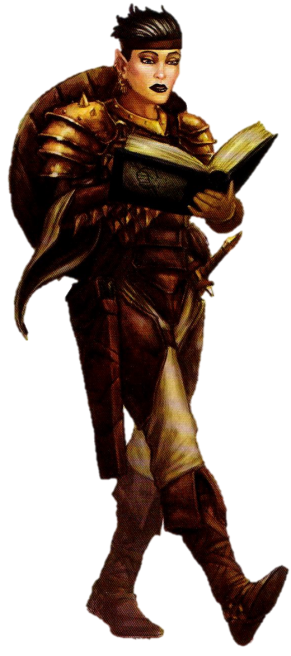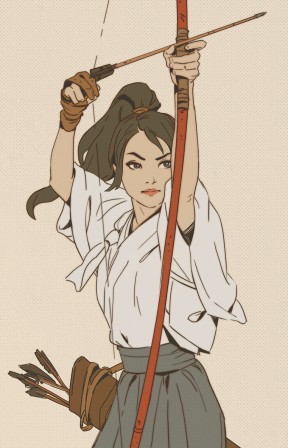Available Subclasses: Devotion, Ancients, Vengeance (PHB); Crown (SCAG)

Image by Tyler Walpole
A number of chivalrous and holy orders exist in Amerath, and paladins are generally members of these; crusaders and defenders of the faith.
Hit Points
Hit Dice: 1d8 per paladin level
Hit Points at 1st level: 1d8 + 16 + your Constitution modifier
Hit Points at higher levels: 2d4 (or 5) + your Constitution modifier per paladin level after 1st
Proficiencies
Armor: Light armor, medium armor
Weapons: Simple weapons, martial weapons
Tools: One gaming set
Saving Throws: Dexterity, Charisma
Skills: Choose three from Acrobatics, Athletics, Insight, Intimidation, Investigation, Medicine, Nature, Perception, Performance, Persuasion, Religion, and Stealth
Equipment
You start with the following equipment, in addition to the equipment granted by your background:
(a) a jian
(a) five javelins or (b) any simple weapon
(a) a priest’s pack or (b) an explorer’s pack
Leather armor, two daggers, and a holy symbol
Unarmored Defense
While you are not wearing any armor, your Armor Class equals 10 + your Dexterity modifier + your Charisma modifier. You can use a shield and still gain this benefit.
Spellcasting
Paladins can not cast spells, though they still gain spell points as normal, which can be used for their Divine Smite.
Divine Sense
Paladins do not have Divine Sense; instead, they have Battle-Ready, below:
Battle-Ready
Whenever you roll initiative, you gain a number of temporary hit points equal to your paladin level + your Charisma modifier.
Fighting Style
May only choose from Defense, Daseel Style, Protection, Rosebriar Style, Half-sword, or Acrobatic.
Gifts of the Faithful
At 2nd, 6th, 9th, and 12th levels, a Paladin may select one feature from below:
Bonus Ability Score Increase
The paladin may increase a single ability score by 2. This gift can be taken multiple times, but only once per ability score.
Bonus Feat
The paladin may take any feat they qualify for as a bonus feat. This gift may be taken multiple times.
Channel Divine Power
Some Paladins may channel divine power like a cleric, though in a slightly more limited fashion. When selecting this feature, a paladin chooses one use of the Channel Divinity feature. They may use this feature a number of times per long rest as if they were a cleric of half their level. If this feature is chosen again it adds a different Channel Divinity feature.
Defend the Fallen
If an ally is reduced to 1/5 or less of their maximum hit points by an attack, you may use a bonus action to Dash provided your Dash takes you closer to that ally.
Pool of Belief
Gain 2d6 dice, which can be used in one of two ways:
Added to a Divine Smite, as per PHB pg 86.
Or, spent as a bonus action to grant an ally temporary hit points equal to the result, which stack with any other temporary hit points. This can only be used on creatures with at least 1 Hit Point, and does not work on undead or constructs.
Spent dice are recovered at the end of a long rest. This feature may be taken multiple times, each time adding 1d6 to the belief pool.
True Believer
1/day, add your proficiency bonus to any save, even if proficiency already applies. You must declare your use of this feature before rolling.
All other features as normal.






